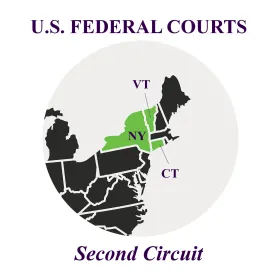The Second Circuit has followed the lead of the Tenth and Fifth Circuits in affirming a bankruptcy court ruling regarding private student loans under 11 U.S.C. § 523(a)(8). In Homaidan v. Navient, et al., the court ultimately held that the exception to discharge language – “an obligation to repay funds received as an educational benefit, scholarship, or stipend” – does not cover private student loans. This follows similar results from the Tenth Circuit and Fifth Circuit.
Background
Homaidan took out over $12,000 in student loans from Sallie Mae Inc., Navient’s predecessor in interest. After graduating, Homaidan filed for Chapter 7 bankruptcy in the Eastern District of New York and obtained a discharge order. The order did not specify which debts were discharged and only noted that some “common types of debts” including “[d]ebts for most student loans” were not dischargeable in a Chapter 7 proceeding. Later, Homaidan paid the loans in full “under the mistaken belief that he had a legal obligation to do so.” In 2017, he reopened his bankruptcy case to seek a determination of whether the loans were discharged and filed an adversary proceeding. After Navient had filed a motion to dismiss, the bankruptcy court held that “both by its terms and read in context, [$523(a)(8)(A)(ii)] does not sweep in all education-related debt.”
Court’s Statutory Interpretation
The question before the court was whether the private student loans at issue constituted “an obligation to repay funds received as an educational benefit” to be excepted from discharge under § 523(a)(8)(A)(ii). Navient contended that the loan agreement at issue was an “obligation to repay funds” that were obtained for the purposes of education, making them an “educational benefit.” The court disagreed, stating that the phrase “an obligation to repay funds received as an educational benefit” would be “an unconventional way to discuss a loan,” as the bankruptcy court had put it. According to the court, “if Congress had intended to except all educational loans from discharge under § 523(a)(8)(A)(ii), it would have done so in such stilted terms” and “there are educational benefits that students may become obligated to repay—such as conditional grants—which fit the statutory text more naturally.”
The court went on to assess and reject Navient’s other statutory interpretation arguments, pointing out that Congress had used the word “loan” in other spots in § 523(a)(8) and that an expansive reading offended the canon of surplusage by swallowing up other sections of § 523(a)(8). It took further space to detail the “evolution” of § 523(a)(8) with the 2005 Bankruptcy Abuse Prevention and Consumer Protection Act to show that the focused section was not a catch-all for educational loans.
The court ultimately landed on the narrower interpretation that “§ 523(a)(8)(A)(i) covers government and nonprofit-backed loans and educational benefit overpayments; § 523(a)(8)(A)(ii) covers scholarships, stipends, and conditional education grants; and § 523(a)(8)(B) covers private loans made to individuals attending eligible schools for certain qualified expenses.” In closing, it stated that “[e]ducational benefit” is “best read to refer to conditional grant payments similar to scholarships and stipends.”
As the McDaniel and Crocker cases before it, the Second Circuit’s Homaidan opinion reflects the growing trend permitting a debtor to discharge certain private student loans. Private student lenders and servicers should be aware of this latest chapter and prepare for similar challenges.





 />i
/>i

